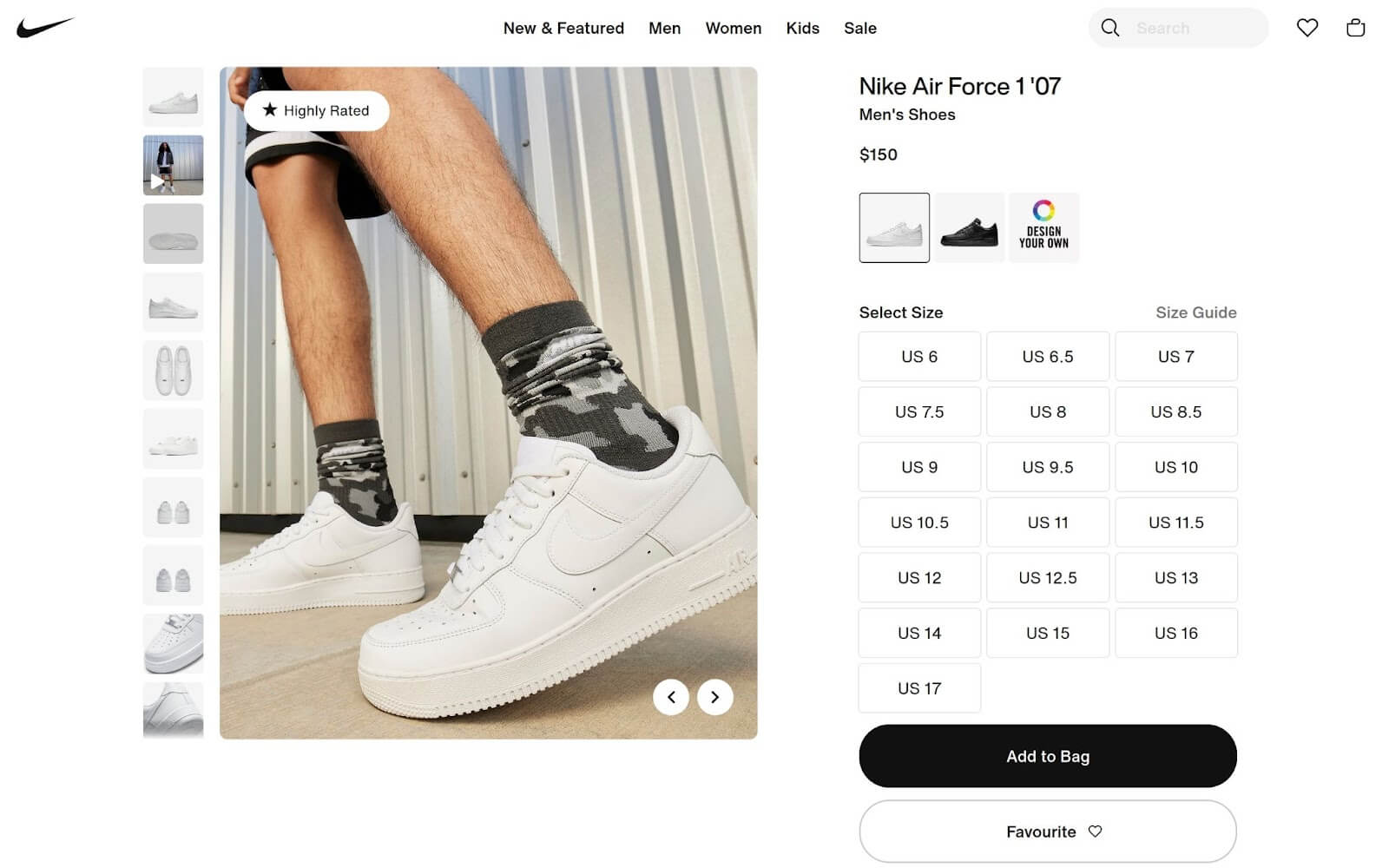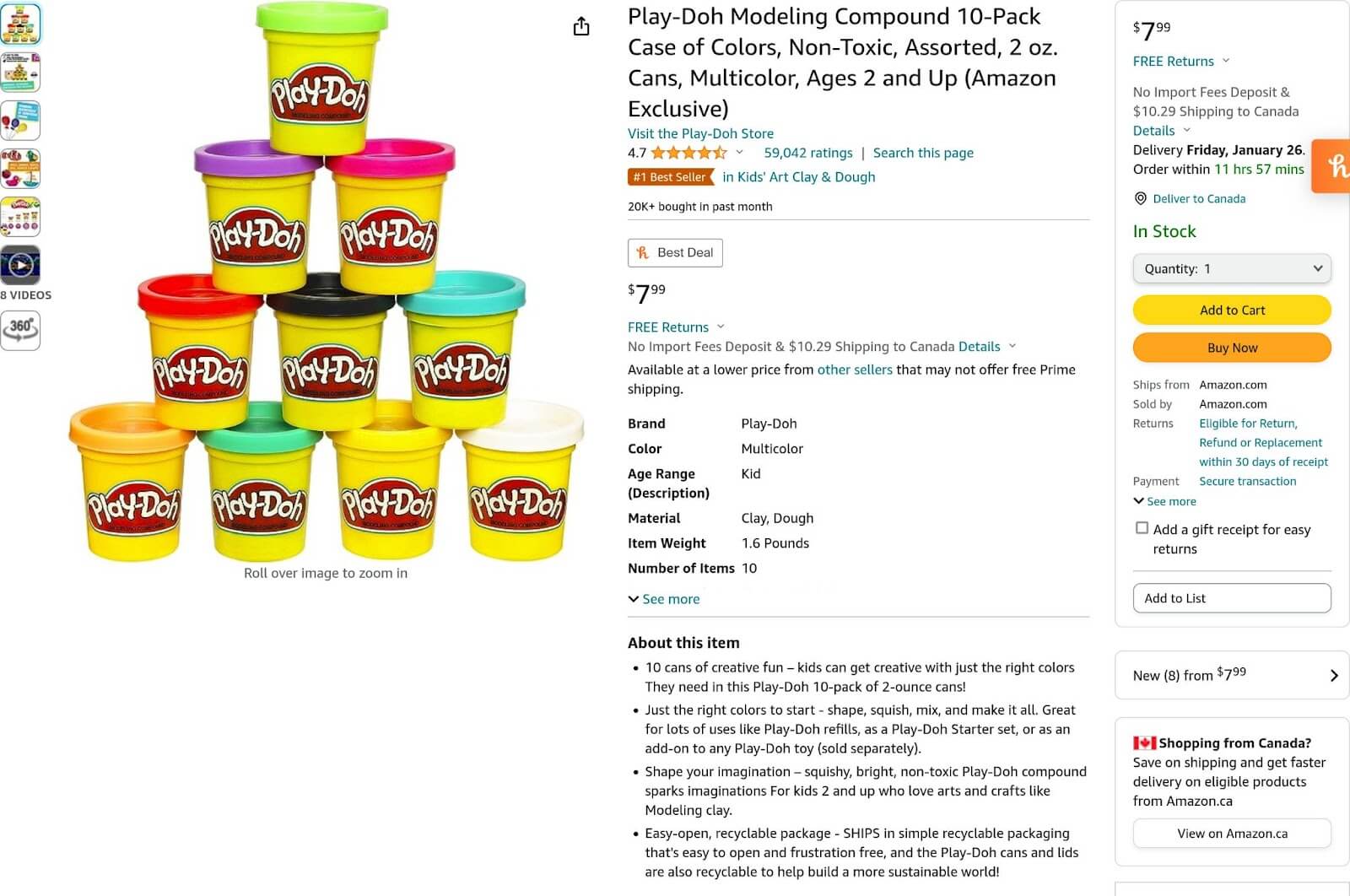10 Ecommerce Product Detail Page Best Practices in 2025 (Plus Three Examples)
Product detail pages (PDPs) are the bread and butter of any eCommerce business. Good product pages don’t merely describe your products; they convert readers into purchasers. Beyond that, they help ensure your customers are happy, by providing all the information they need to make an informed purchasing decision and come away with the perfect product.
There are certain best practices you should follow to ensure maximum conversion rates for your eCommerce site's product pages. Read on to find out the top 10 best practices for building fully optimized PDPs.
Mobile app users spend more, shop more frequently, and are more loyal to your brand. Use our eCommerce App Revenue Calculator to see just how much you stand to gain by launching an app.
Product Detail Page Basics

Whether you’re a seasoned online seller or new to eCommerce, reviewing some basics about product detail pages will help you understand why the best practices below make sense.
Customers make purchases based on product detail pages
It might seem obvious, but customers rely on the information provided on the PDP to make their purchasing decision.
Inaccurate, incomplete, or misleading product pages will lead to customers abandoning their purchase. It's also frustrating for the customer; they want to buy something, and product detail pages that are missing key information just waste their time.
Even if a customer buys something from you when your product page is poor or incomplete, they may return the product later if they feel misled. That’s another headache for you to deal with and will lead to bad reviews and cascading negative consequences.
Product pages help search engines find your products
Not only do humans use product detail pages, but Google and other search engines do too. Search engines use your product pages to match what people search for with products; ideally, you want that to be your product.
If you don’t have good product detail pages, search engines won’t present your products as an option when someone goes looking for a product. That’s lost sales and exposure for you.
Ten eCommerce Product Detail Page Best Practices
1. High-quality images

The importance of images cannot be overstated. Customers rely on clear, accurate images of products to inform their purchase decisions. This includes images of the product itself taken from various angles and lifestyle shots.
Make it clear that customers can enlarge and explore your images, too. Lifestyle images are helpful because they help customers understand how your products will fit into their daily lives and how they could be beneficial.
For example, if it’s clothing, they can see what it looks like when worn. Lifestyle shots of electronics like headphones show them relatively how large they are and how they’ll look in real life.
2. Keep descriptions short, accurate, and informative
People do not like sifting through mounds of text to find the information they need. That is why one product detail page best practice is to ensure they can discover what they need quickly. Some tricks to help ensure this happens are using bullet points, keeping each bullet to a sentence maximum, and putting relevant information first.
For instance, when buying furniture, people will likely want to know how big it is. So, putting the dimension higher in the description would be helpful. Likewise, for clothing, placing the size front and center would help customers understand if it will fit them. Describe what makes the product valuable or unique for electronics and home goods.
Remember to describe how the product is useful or unique. Ensure you include what makes you the best source to purchase it from. And always include how it works, what it does, and why it’s the best at that.
Avoid getting too wordy when writing these descriptions. If you feel information is necessary but not absolutely essential, you can put it under a “learn more” or similar section. That will also help convert pickier customers.
3. Take advantage of scarcity
People tend to hit “buy now” when it is apparent that the product they want is low on stock. You can take advantage of this by showing the stock remaining for every product on its PDP. Another reason to do this is because you're being honest.
If customers only find out something is out of stock when it is in their cart, or worse, at checkout, they may abandon their entire shopping trip. Letting people know stock is low may not only act as an impulse to buy but also allow them to browse other products if the one they’re currently looking at is out of stock.
Likewise, showing limited-time sales or discounts may help, too. Don’t get carried away with this, however. Shoppers can tell if you’re artificially limiting everything or claiming everything is on temporary sale and may lose trust in you.
4. Have reviews available
Social proof is something customers expect these days. That is why product description page best practices include making sure they can see reviews of every product in your eCommerce store. Remember, customers trust other people more than brands.
These reviews should be honest, genuine reviews by actual customers. Don’t try to showcase fake reviews. People can tell, and this will lead to abandoned carts.
Make sure these reviews aren’t too far down the page, either. They don’t have to be at the top, but relegating them to the bottom isn’t the best idea. Also, remember that the reviews on product pages should be for that particular product. It’s confusing if other products’ reviews show up on non-relevant pages.
5. Be honest about prices, including shipping

The price of a product is a significant factor in determining if a customer will hit the “buy” button. That is why you should be honest about prices. This includes how you display shipping charges.
Shipping should ideally be free for everything in your eCommerce store. If you cannot do this, then be upfront about shipping charges on PDP pages. If you can offer free shipping after someone spends $50 or more, make that clear.
Whatever the case with your business, ensure sale prices are accurate and clearly marked. For customers, knowing they are saving money is always a nice feeling, and it could help increase your conversion rates.
6. Recommending other products
Recommending other products your customers can buy after looking at one product is a simple yet effective product detail page optimization. For some products, this can be obvious. For example, if a customer is looking at a table, you can recommend a matching set of chairs.
Likewise, for fashion products, say a shirt, you can recommend coordinating pants and accessories. Just avoid anything that looks too identical. This could lead to confusion and abandoned attempts because customers may not think they’re getting the best option or value.
This approach also lets customers browse longer. They may buy something else even if they click away from the product they first visited.
7. Keep SEO optimization in mind
As mentioned earlier, not only do people read your product descriptions, but so do search engines. That is why good SEO fundamentals are a PDP best practice.
Research the keywords related to your products and include a few in your PDP. Don’t go overboard and overload your pages, however. A few mentions is enough for your top keyword, and a single mention on the page for supporting keywords.
Likewise, ensure the tone of your content is authoritative and straightforward. Keep your descriptions honest and concise; Google and other search engines will likely rank your product pages higher in their results.
Images, too, benefit from good SEO. Ensure each image has relevant ALT text that describes what it is. Large, clear photos are also great for searchability in addition to textual content.
8. Make it easy to select product variants
If you sell something that comes in multiple colors, styles, or other options, ensure it is easy to select these variants from one product description page. Don’t send customers hunting for another PDP just to find another size or color.
Make the fields that distinguish between options straightforward and easy to understand. For example, colored dots to indicate different color options and simple size labels such as “XXL, XL, L, S, M” are simple enough for most customers to understand at first sight.
If you offer customization options, such as engraving or embroidery, include a field for that and clarify what it is for. These best practices help present just the right amount of choice without tipping into choice overload and the resulting paralysis it can induce.
9. Make your call to action obvious
This might seem obvious, but ensuring the “buy” button is obvious is an easy way to improve product detail pages. Keep it simple and short, such as “Add to Cart,” “Buy Now,” or something similar.
Remember that “Add to Cart,” “Buy Now” function slightly differently. The former lets customers gather a few products before committing to a purchase. The latter enables them to buy one product right away. Usually, the former is better for most shops, but if you think something may benefit from an impulse buy scenario, consider the latter.
You may also want to include an “Add To Wishlist” button. That way, unsure customers can still keep their desired products in a convenient place. And it allows you to email them later, reminding them of their wishlist if they have an account set up.
10. Ensure PDPs are similar across web and mobile

It is imperative that you have PDPs that work, look, and feel similar across your website and app. This essential product detail page best practice is often overlooked but shouldn't be.
Keep your theme consistent across web and mobile. Make sure that your text and images flow naturally on mobile as well. Remember, mobile apps are seen on smaller screens. So, be sure to test your layout on both a computer and a smartphone.
Ensure that iOS and Android users get the same PDPs. If your website has unique features, keeping them available on mobile will also go a long way in keeping every visit consistent.
Read More: 15 Mobile eCommerce Best Practices You Need to Follow
Three Examples of eCommerce Product Detail Pages Done Right
Nike

Nike showcases some critical PDP best practices. These include large, clear images and lifestyle shots. They even use a video to show further what these shoes are like and what they can do. All available sizes are laid out, and the calls to action are clear and concise.
Scrolling down a little, we get a short, sweet description of the shoes. Customers can expand relevant sections to learn more details if they wish. Below, we can see real customer photos, additional product suggestions, and even more photos.
Amazon

Not every Amazon page is an excellent example of PDP optimization, but this PDP for Play-Doh is. We get a clear product shot, video content, and both “Buy Now” and “Add to Cart” options. The price is clear, and the remaining stock is evident right away.
We can also see clear bullet points describing the product, its features, and what it is suitable for. We can see from the title that it is an Amazon-exclusive offer, as well. Scrolling down presents us with even more in-depth information. And there are product reviews included, to boot.
Rainbow Shops

Rainbow Shops exemplifies some PDP optimizations when it comes to fashion. We can see different colors and sizes of these jeans and their prices at the top of the page. There is a clear call to action button and a favorite button in case a customer is not quite ready to buy just yet.
The description lets us know that they’re skinny leg and high-waisted. Plus, it lets us know the model’s measurements and the size they’re wearing. Scrolling down, we get outfit recommendations and similar items.
Want to dive deeper? Our Ultimate Guide to Product Detail Pages has a full breakdown of every element your PDP needs to have, with real examples.
eCommerce Product Detail Page Best Practices: Final Thoughts
Optimizing your PDP pages will go a long way to improving your conversion rates. They are an essential part of eCommerce, and it's worth taking the time to ensure they are effective, read well, optimized for SEO and sell the product as well as possible.
Finally, we discussed mobile optimization as one of our core eCommerce PDP best practices. To take it a step further, most ecommerce brands today have their own mobile app, which provides an even better user experience for mobile shoppers than a mobile-friendly website.
MobiLoud is the best way for eCommerce sites to launch mobile apps, without the huge expense of custom development, and allowing you to keep your fully-optimized product pages (which you won't be able to do with template-based app builders).
To turn your website into a fully functional app with no coding required, get a free preview of your app and get in touch with us today.
FAQs
Convert your website into a mobile app









.webp)

